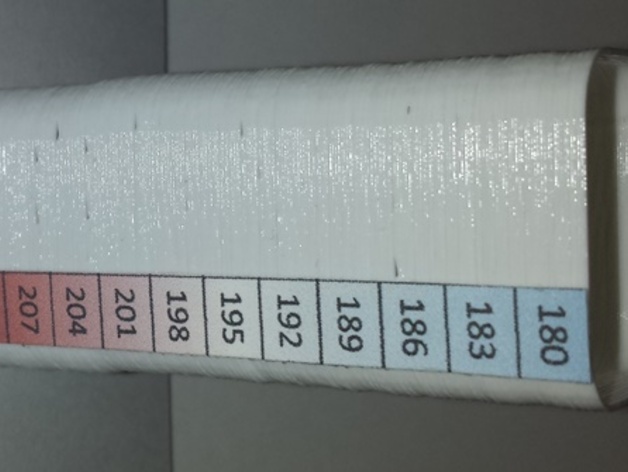
Hot End Temperature Calibration Model
thingiverse
Human: Use this model to fine-tune your hot end temperature to synchronize with your speeds/feeds and filament, achieving superior print outcomes. Consult instructions for further details. Instructions I printed this model using a QU-BD TwoUp, which is nearly standard: direct drive extruder, 0.40 mm nozzle, 0.22225 layer height. Clearly, but I'll emphasize that this model must be printed at 90 degrees from the view in Thingiview or Slic3r, so you'll need to rotate it once you import it. Start by beginning with the upper limit of the recommended temperature range and print a few layers, then lower the hot end temperature, continue printing more layers, repeating this process until either reaching the bottom limit of the temperature range or it becomes too cold to extrude and your extruder jams or starts clicking. Observe the resulting print to identify the optimal temperature. Note: Feedback from others has led me to understand that my embedded speeds in the Excel file have caused confusion. Please consider it only a guide for editing your gcode unless you're printing at 20 mm/s, which this gcode specifies. I plan to write a python script to automate these edits but don't hold your breath; it's a steep learning curve as a Python noob with half a Coursera class under my belt. The Excel file contains the modified gcode, altering the hot end temperature every 5 mm. Initially, I aimed to make it parametric, adjusting parameters in the "Parameters" worksheet, but realized that tweaking the temperature range was the quicker approach. Simply adjust cells D4 (low temp) and D5 (high temp) according to your desired test range and save this as a text file. Now, copy-paste these lines into Slic3r: just look for instances of "G1 Z5" in a text editor and insert the "M104 S___" command after them. Replace blank with your target temperature.
With this file you will be able to print Hot End Temperature Calibration Model with your 3D printer. Click on the button and save the file on your computer to work, edit or customize your design. You can also find more 3D designs for printers on Hot End Temperature Calibration Model.
